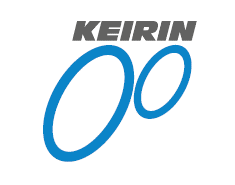The 28th International Superconductivity Symposium (ISS2015) will again
be held this year, sponsored by the International Superconductivity Technology
Center (ISTEC). A century has passed since the discovery of superconductivity
in 1911, and a quarter of a century passed since the discovery of oxide-based
high temperature superconductors. During this time superconducting technologies
have been applied to a variety of fields including MRIs, coil technologies
for generating high magnetic fields, and maglev train technology. In particular,
since the discovery of oxide-based high temperature superconductors, the
fields predicted for superconducting technology applications have expanded.
Whilst superconducting technologies have been progressing, the need to
establish energy savings and safe/reliable social systems has become urgent.
We highlight the fields where superconductor technology can potentially
contribute to establish such a society, and also those fields where superconducting
applications have specifically been investigated so far. These include,
(1) Low-loss power systems
(2) Low-power consuming information processing technologies
(3) Next generation transportation technologies operating with greater
efficiencies
(4) Easier introduction to renewable energies
(5) Medical systems employing stronger magnetic fields
(6) Sensor technologies in seismic detectors and metal-resources exploration
(7) IEA-HTS-IA and ISS Joint Special Session for Young Generation
It is fundamental technologies such as understanding mechanisms of the
superconducting phenomena, high-quality superconductor fabrication technology,
AC loss reduction technology, cooling technology and various simulation
technologies that have led to the realization of such practical equipment.
Whilst the explorations of Fe-based and other new superconductors have
been intensely investigated, the progress of technologies related to metal-based
superconductors has also continued, with some having already been realized
for practical use and commercialized. It is expected that such universal
technology development will further accelerate with broadened international
collaborations.
This symposium, launched back in 1988, is an international symposium and
now has 400-500 participants, with around 100 participants from more than
20 overseas countries. I would like to conclude with a message from all
ISS2015 committee members who hope that this symposium will serve as a
forum for scientists, engineers, academic students and corporate executives
worldwide, and with a spirit of international cooperation, facilitate the
reporting of new research outcomes, the exchange of opinions and discussions
on a variety of superconductivity technologies ranging from fundamental
to practical applications.
Shin-ichi Uchida
Chairperson
Organizing Committee ISS2015
